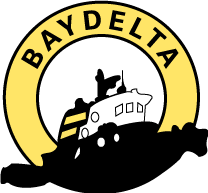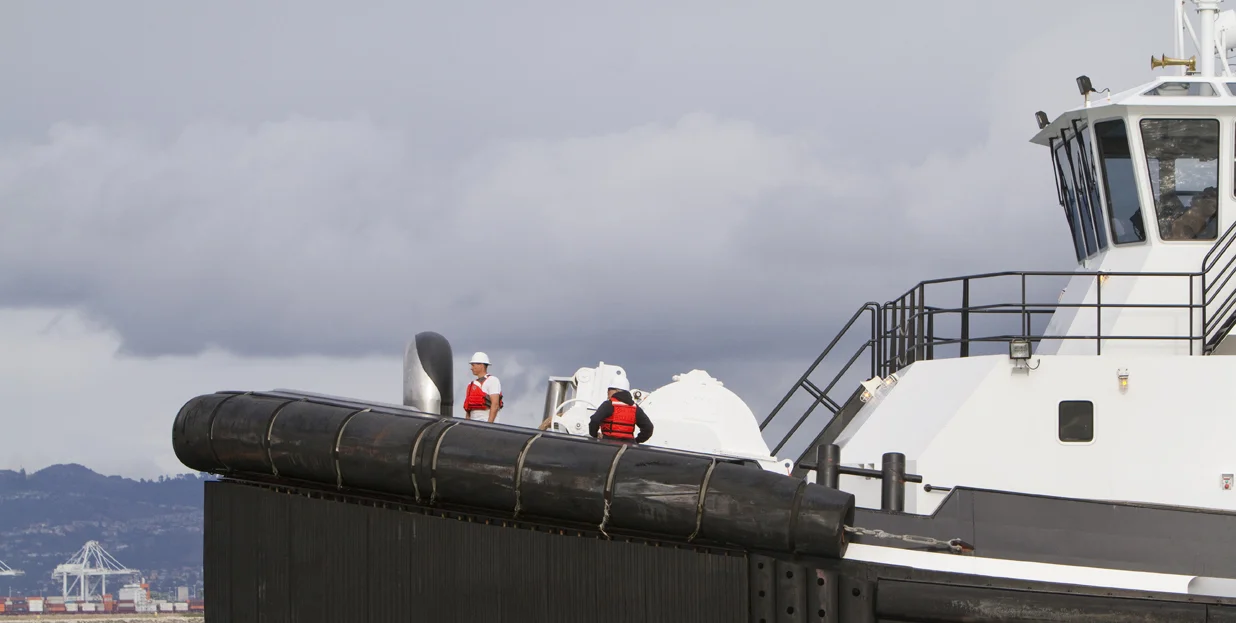The California Oil Spill Prevention Act of 1990 established statutory Petroleum Tank Ship Escort requirements for regulations governing vessel movements in California ports and harbors.
Among the resultant regulations is a requirement that “. . . all tank vessels carrying 5,000 or more long tons of oil as cargo . . .“ employ a tugboat escort from the approaches to San Francisco Bay to any of, or between, the ports or anchorages within the bay. The regulations determine the minimum pulling capability of the tug, or tugs, escort based upon applicable parameters. These are:
1. Displacement tonnage of the tank ship or deadweight tonnage of the tank barge.
2. Dynamic pulling capability of the tug or tugs expressed in KIPS (an engineering unit of force)
3. Maximum current at any point traversed during the vessels transit of the bay.
4. Whether the tank ship is a barge or a self propelled vessel.
5. The geographical zone
A tank ship, with such a cargo, transiting the bay is required to calculate the required California State mandated “KIPS” and obtain the services of sufficient towage to meet the escort requirement. As arriving vessels are frequently unfamiliar with this requirement The Marine Exchange of the Bay Area, as the secretariat for the State of California, monitors the KIPS required by the ship. As a practical matter the ship’s agent in cooperation with the Marine Exchange and the tug supplier advises the ship of the required KIPS to be ordered by the agent or owners representative. In the case of a tank barge, escort tugs will be matched on a one to one correlation with the deadweight tonnage to the escort tug’s braking force (kips).
The State of California divides San Francisco Bay into several geographic zones for the purpose of the Escort Regulations. Tug escort charges are calculated with reference to these zones. The zones are:
Zone 1. Point Bonita entrance light to the Golden Gate Bridge
Zone 2. Golden Gate Bridge south to Point San Bruno and north to Point San Pablo (essentially the greater Bay Area, includes the Chevron Long Wharf, Anchorages #7 & #9)
Zone 3. All waters from the southern end of Zone 2 to one mile north of the San Mateo Bridge
Zone 4. The navigation channel one mile north of and one mile south of the San Mateo Bridge.
Zone 5. From the eastern boundary of Zone 2 to the western approaches to the Carquinez Bridge at Light 15.
Zone 6. All waters from Light 15 through the Carquinez Strait into the Sacramento Ship Channel and east on The San Joaquin River. (Includes terminals at Pacific Refining, Oleum, Wickland, Crockett, Benicia, Exxon, Shell Martinez, Amorco, Wickland Martinez, Avon, PG&E Pittsburg, Dow Chemical)
Subject tank vessels are required to have tug escorts in Zones 1,2,4,and 6.
The following link will connect you with the governing regulation: www.sfmx.org
Click on “Tanker Escort” in the lower left corner, then click on “Regulations” in the menu.

